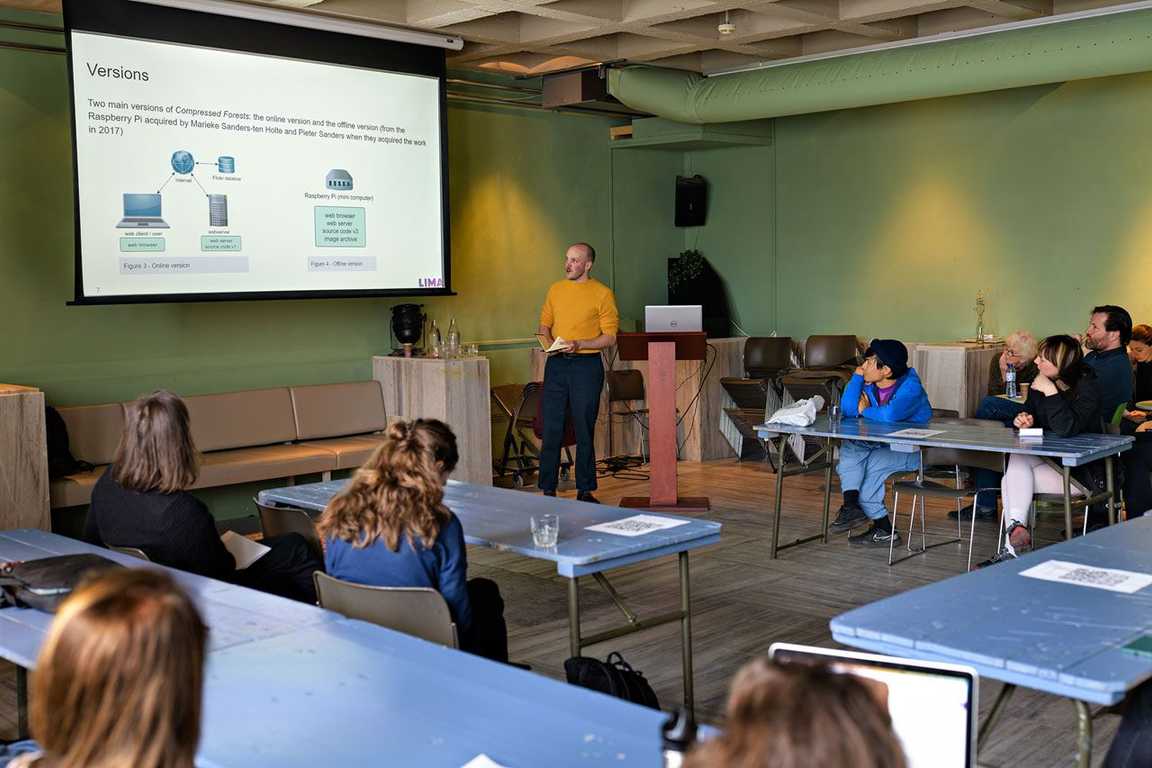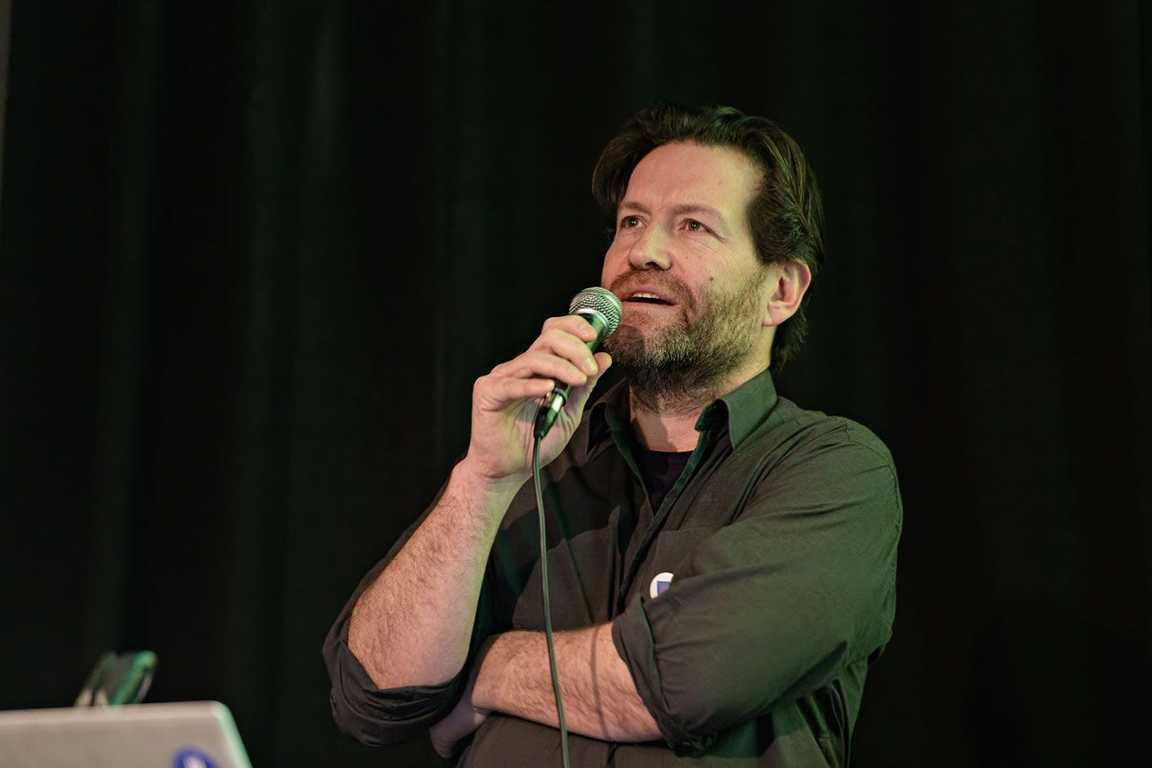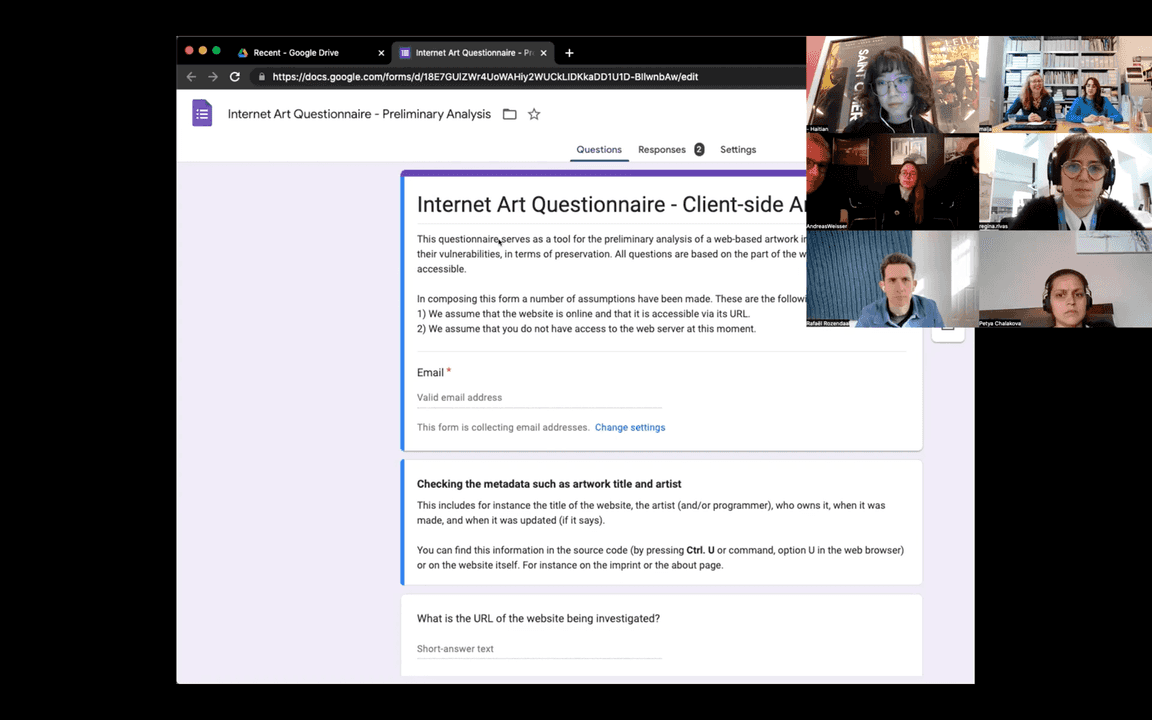
Collaborative Infrastructure at LI-MA's TDA Symposium
Educating about Sustainable Infrastructure at the TDA Symposium
At the 2023 edition of LI-MA’s Transformation Digital Art symposium, the afternoon of March 17th was devoted to the findings of the Collaborative Infrastructure for Sustainable Access to Digital Art Project.
Analysis of Net Art: Shedding Light on the First Three Case Studies in the Project
The first three case studies in the project, Jan Robert Leegte’s Compressed Forest (2016), Rafaël Rozendaal’s fillthisup.com (2014) and Jeroen Jongeleen’s Running A Circle Clockwise (2017), two of which were presented here, were examined from the perspective of analysis. This is in line with the three main themes that guide the Collaborative Infrastructure for Sustainable Access to Digital Art project, which include analysis, documentation and storage. Each theme is assigned to a set of case studies which are then investigated from that perspective, as with the first three included here. The results of this research were investigated in depth with Leegte and Rozendaal as part of the following workshops.

Jan Robert Leegte at the 2023 edition of LI-MA's Transformation Digital Art Symposium
Net Art Analysing Workshop: Jan Robert Leegte's Compressed Forests and Annie Abraham's Being Human
During the Net Art Analysing workshop moderated by Joost Dofferhoff (Registrar and Assistant Conservator) and Monika Szűcsová (Independent Curator and Researcher), two net art pieces were discussed: Jan Robert Leegte’s Compressed Forests (2016) and Annie Abraham’s Being Human (1997–2007).
How to Analyse and Preserve a Work that has More than One Version?
Jan Robert Leegte gave a short introduction on his work Compressed Forests (2016), after which Joost Dofferhoff continued with the research that had been done on the work in order to preserve it. This research focused primarily on how to analyse and preserve a work that has more than one version as well as external dependencies beyond the creator’s control. Annie Abrahams continued the workshop, discussing her work Being Human (1997), which was a long-running variable net art work consisting of many different web pages, variations and content that were dynamically linked together. Monika Szűcsová spoke on how she conducted the research into this seminal piece of Dutch media art history and discussed ways of bringing Being Human back to life. One of these ways was Bram.TV, a web page that grabs randomised content from Being Human and other net art works from Abrahams, flashing through them in the manner of channel surfing on a television. Annie Abrahams also spoke about her plan to create a hardcover artistic book from the code of Being Human in order to also make her work physically available, instead of only online.

Discussion of the Internet Art Questionnaire for Client-side Analysis
Net Art Analysing Workshop: Rafaël Rozendaal's fillthisup.com
During the Net Art Analysing Workshop, moderated by Olivia Brum (Junior Conservator) and Paula Feranandez (PhD Intern) and held on Rafaël Rozendaal’s fillthisup.com (2014), the artist began by presenting an overview of his net artworks with emphasis on the work included in the case study.
LI-MA's Internet Art Questionnaire in Discussion with the Artist
Questions presented by the moderators to the artist included the following: How does documenting the work affect the fluidity of the work’s evolution? How do you work with conservators? And who is allowed to update the work so that it stays in line with your artistic intention? Then the participants were presented with the Internet Art Questionnaire and asked to analyse one of the artist’s works. Comments and input provided by the participant’s reflections on working with the questionnaire, such as including a point regarding firewalls, were worked into the finalised form available at the above link.






